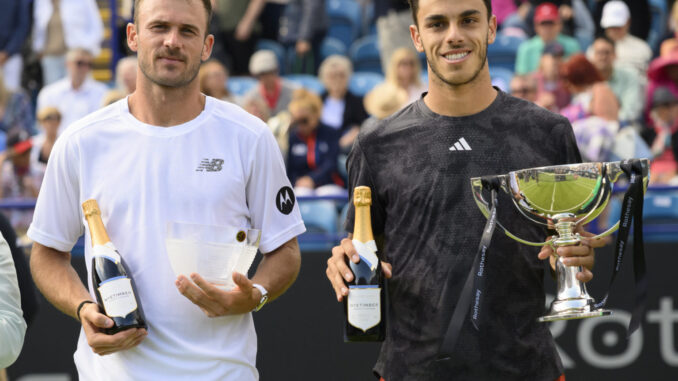
The competitive landscape of professional tennis is a complex web of rivalries, stylistic clashes, and individual preferences. For Tommy Paul, a rising star on the ATP tour, the challenges presented by certain opponents transcend mere rankings. He recently offered a candid assessment of his most difficult matchups, revealing that two players ranked outside the top 20 pose a greater challenge to him than even the formidable duo of Carlos Alcaraz and Jannik Sinner. This revelation has sparked considerable interest, offering a unique perspective on the intricacies of professional tennis and the subjective nature of competitive matchups.
Paul’s assessment, which deviates from the conventional focus on top-ranked players, highlights the importance of individual styles and personal preferences in determining the difficulty of a matchup. While Alcaraz and Sinner, both considered future stars of the sport, present significant challenges, Paul’s experiences against two lower-ranked players have proven even more daunting.
“It’s not always about rankings,” Paul reportedly stated, emphasizing the importance of individual styles. “Some players just have a way of making you feel uncomfortable on the court.”
He then proceeded to name the two players who have consistently posed the greatest challenge to him. These players, whose names have circulated among tennis circles, are known for their unique playing styles and their ability to disrupt the rhythm of their opponents.
“Their games just don’t match up well with mine,” Paul explained. “They have a knack for exploiting my weaknesses and making me play on their terms.”
Paul’s honesty about his struggles against these players underscores the subjective nature of competitive matchups. What works for one player may not work for another, and individual styles can play a significant role in determining the outcome of a match.
“It’s not that I don’t respect Alcaraz and Sinner,” Paul clarified. “They are both incredible players, and I have a lot of respect for their games. But against these other two guys, I just seem to struggle more.”
This candid admission highlights the mental and emotional challenges of professional tennis. Even for top-ranked players, certain opponents can create a sense of unease and disrupt their confidence.
“It’s a mental battle as much as a physical one,” Paul acknowledged. “You have to stay focused and try to find a way to overcome the challenges they present.”
Paul’s assessment also sheds light on the depth and competitiveness of the ATP tour. Even players ranked outside the top 20 possess the skills and strategies to challenge the best in the world.
“There are so many talented players on the tour,” Paul observed. “You can’t afford to underestimate anyone.”
The two players that Paul struggles with are known for their ability to change the pace of a match, and their ability to throw off the rhythm of their opponents. They are known to play a style that is not as common as the top 20 players.
The idea that players ranked outside the top 20 could pose a greater challenge than those within the top tier highlights the unpredictable nature of professional tennis. Upsets and unexpected results are a common occurrence, and even the best players can face difficult matchups.
Paul’s insights also provide a glimpse into the strategic thinking that goes into preparing for a match. Players and their coaches meticulously analyze their opponents’ strengths and weaknesses, developing game plans tailored to each individual matchup.
“You have to do your homework,” Paul emphasized. “You have to understand your opponent’s tendencies and try to exploit their weaknesses.”
The discussion also extends to the psychological aspect of professional tennis. Even for top-ranked players, certain opponents can create a sense of unease and disrupt their confidence.
“It’s a mental battle as much as a physical one,” Paul acknowledged. “You have to stay focused and try to find a way to overcome the challenges they present.”
In essence, Tommy Paul’s candid assessment of his most difficult matchups highlights the complexities of professional tennis and the importance of individual styles and personal preferences. It underscores the depth and competitiveness of the ATP tour, where even players ranked outside the top 20 can pose significant challenges. It also shows that even the best players have opponents that they find difficult to play against.
Leave a Reply